Hood Vent to fit 36" Fabuwood Hood
Nancy Carey
3 years ago
Featured Answer
Sort by:Oldest
Comments (56)
darbuka
3 years agoopaone
3 years agolast modified: 3 years agoRelated Discussions
36' Capital Culinarian Cooktop Purchased- Need Vent Hood!
Comments (14)The hyex is the blower? I think it's possible the silencer may not be so necessary ... I also think people who know about this may tell you that it is! Here's my experience. I just bought a 42" x 27" undercabinet hood with no blower and routed the 10" pipe up to the attic. It bent there at about, um, 80-degrees and the HVAC guy put the silencer in at that point and then added the fan. It was loud. So instead he added some more duct parallel with the ceiling which pulled the silencer further from the hood itself, if you follow. It got quiet. My HVAC guy, who is admittedly a nut, seemed to be of the opinion that the biggest reason for the improvement was simply the increased distance from the hood. I also talked him into making that extra duct run parallel to the ceiling - i.e. at a shallower angle than right-angling it straight away after it hit the attic; that may also have helped (he was a little reluctant because it was extra work but he's a really good guy and wanted very much to do a good job so when I turned around he'd done as I suggested: yeah!). So anyway, that's what this guy said - he's of the opinion that the silencer was "a waste of money" and the proximity-parameter was of biggest importance. I talked extensively with this amazingly nice guy at Tradewind and I'm pretty sure he would not agree; he'd credit the silencer more. If you have time and patience, I'd say you could try it without and if it's a problem, then get the silencer and pop it in. Just so you know, that silencer is *massive* - it's more like a jet engine than the blower itself. Good luck! BTW, I hope you don't have fussy neighbors too close. I opted not to use an outside blower because I was concerned with the noise it would impose on nearby neighbors; others have noted this problem with that blower I think. If you're miles from the next elk, it may not matter. If you have cranky neighbors 20 feet away, well...it seemed a problem worth preempting....See More30' vent hood on top of 36' dcs or wolf rangetop (a disaster?!).
Comments (10)If that picture really reflects what you have, then I would be worried too. If the cabs on either side of your hood drop down close to the countertop, as the picture suggests, then you may have under 24'' of clearance from rangetop to bottom of cabinet. With a high output range that would seem to be an invitation to at least scorching of the cabinets, if not an all-out fire hazard. If you've searched for hood vent discussions on this forum you've seen that there is a strong disapproval for hoods that are equal in width to the cooktop, let alone narrower than the cooktop! Even with a high cfm hood (and 680 cfm does not qualify in my mind as high), you may pull some of the hot convection current away from your side cabs, but there is direct radiant heat energy that is not affected at all by airstream which will heat your cabinets. That's independent of the smoke/grease/odor issues that an inadequately sized hood would cause, that you say don't worry you. Why the compulsion to go with a 36'' range in a space designed for a 30''? You lose a couple burners of course but if that's what you have to work with that's a sensible option. Not to mention that a six burner Wolf would really require more than 680 cfm for decent ventilation. Or, can you pull down your two flanking cabinets and replace them with narrower cabs? Or even just delete them altogether and mount a freestanding hood there?...See MoreHelp with finding venting to fit my 42" copper hood shell
Comments (4)Modern-Aire will custom build a hood liner to your exact specs--size, depth, location of ductwork, type of blower (internal vs external--although the shallow height of your hood would likely be better accommodated with an external blower), lighting choice etc. You should end up with a SS liner with the preferred baffle filters, which would drop into your unit like a glove. And at a price that's surprisingly close to off the shelf units. And with superb hand craftsmanship, made in America. I post this repetitively, I know, but I love my MA hood just as much 5 years after installation as I did when we installed it. One of the best things in my kitchen....See MoreModernaire vent hood or other to vent out back above a 36" bluestar?
Comments (14)Hmmm. The most powerful blower that will fit, operated at lower CFM, should be quieter than a less powerful blower operated at the same CFM. However, if the difference between blowers is only the motor and not the size or design of the fan blades, then the sound levels would be expected to be the same. We are discussing Modernaire here, so consult with them. They are competent to address your concerns and/or provide noise data vs. CFM. I don't know if they are willing, however. No elbow is better than one elbow for reducing pressure loss. However, even if a 10-inch elbow could be fitted, hood baffles will dominate the pressure loss in the hood system path, and make-up air (MUA) or lack thereof could easily dominate the entire air path unless properly designed. In any case, I don't see here any effort to define requirements before homing in on particulars. I have addressed this in many messages. Please specify the intake aperture size or area you plan to use so the required flow rate can be determined....See MoreNancy Carey
3 years agoopaone
3 years agodarbuka
3 years agoNancy Carey
3 years agokaseki
3 years agoNancy Carey
3 years agolucky998877
3 years agoNancy Carey
3 years agoopaone
3 years agolast modified: 3 years agostdhkim Kim
2 years agoUser
2 years agolast modified: 2 years agoNancy Carey
2 years agoopaone
2 years agoSheila
2 years agokaseki
2 years agowilson853
2 years agoteresa cai
2 years agoNancy Carey
2 years agoNancy Carey
2 years agodarlie75
2 years agoSherri Costello-Clarke
2 years agoteresa cai
2 years agoopaone
2 years agoSherri Costello-Clarke
2 years agoSherri Costello-Clarke
2 years agoopaone
2 years agolast modified: 2 years agoNancy Carey
2 years agoSherri Costello-Clarke
2 years agoSherri Costello-Clarke
2 years agoNancy Carey
2 years agokaseki
2 years agoNancy Carey
2 years agoSherri Costello-Clarke
2 years agoteresa cai
2 years agoRachel
2 years agoNancy Carey
2 years agokaseki
2 years agoRachel
2 years agoRachel
2 years agolast modified: 2 years agokaseki
2 years agolast modified: 2 years agoRachel
2 years agoHU-280028478
last yearHU-280028478
last yearUser
last yearkaseki
last yearDebbi Washburn
last year
Related Stories
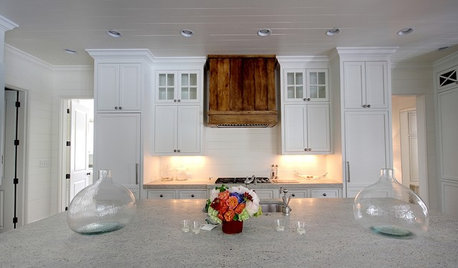
KITCHEN DESIGNWood Range Hoods Naturally Fit Kitchen Style
Bring warmth and beauty into the heart of your home with a range hood crafted from nature's bounty
Full Story
5 Stunning Modern Range Hoods
Today's kitchen range hoods can look like sleek sculptures. Here's what to look for when you go shopping for one
Full Story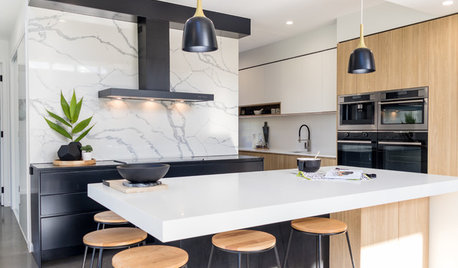
KITCHEN DESIGNHow to Get Your Range Hood Right
Get a handle on the technical specs, and then learn about fun design options for creating a beautiful kitchen feature
Full Story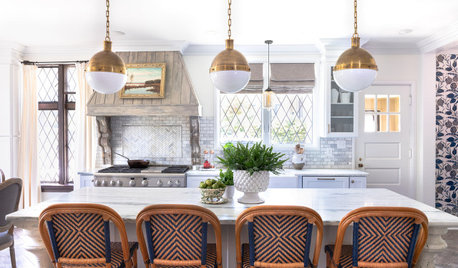
KITCHEN MAKEOVERSKitchen of the Week: Hand-Painted Range Hood and Classic Finishes
A designer puts hardworking materials, repurposed features and personal touches to work in her own charming kitchen
Full Story
KITCHEN DESIGNHow to Choose the Right Hood Fan for Your Kitchen
Keep your kitchen clean and your home's air fresh by understanding all the options for ventilating via a hood fan
Full Story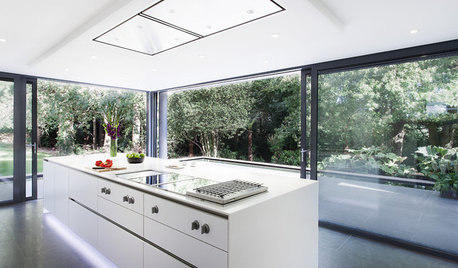
KITCHEN APPLIANCESDisappearing Range Hoods: A New Trend?
Concealed exhaust fans cut visual clutter in the kitchen
Full Story
KITCHEN DESIGNWhat to Know When Choosing a Range Hood
Find out the types of kitchen range hoods available and the options for customized units
Full Story
KITCHEN APPLIANCESWhat to Consider When Adding a Range Hood
Get to know the types, styles and why you may want to skip a hood altogether
Full Story
KITCHEN APPLIANCESThe Many Ways to Get Creative With Kitchen Hoods
Distinctive hood designs — in reclaimed barn wood, zinc, copper and more — are transforming the look of kitchens
Full Story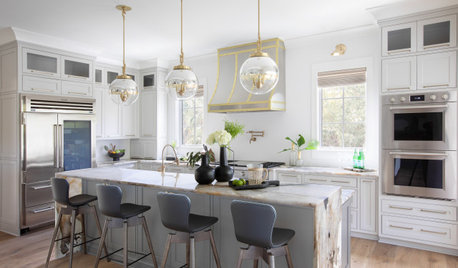
KITCHEN DESIGNDesigner Tips for Range Hoods, Appliances and Lighting
Learn how to get your microwave height just right, what kind of bar stool will be most comfortable and more
Full Story


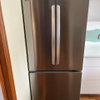

opaone